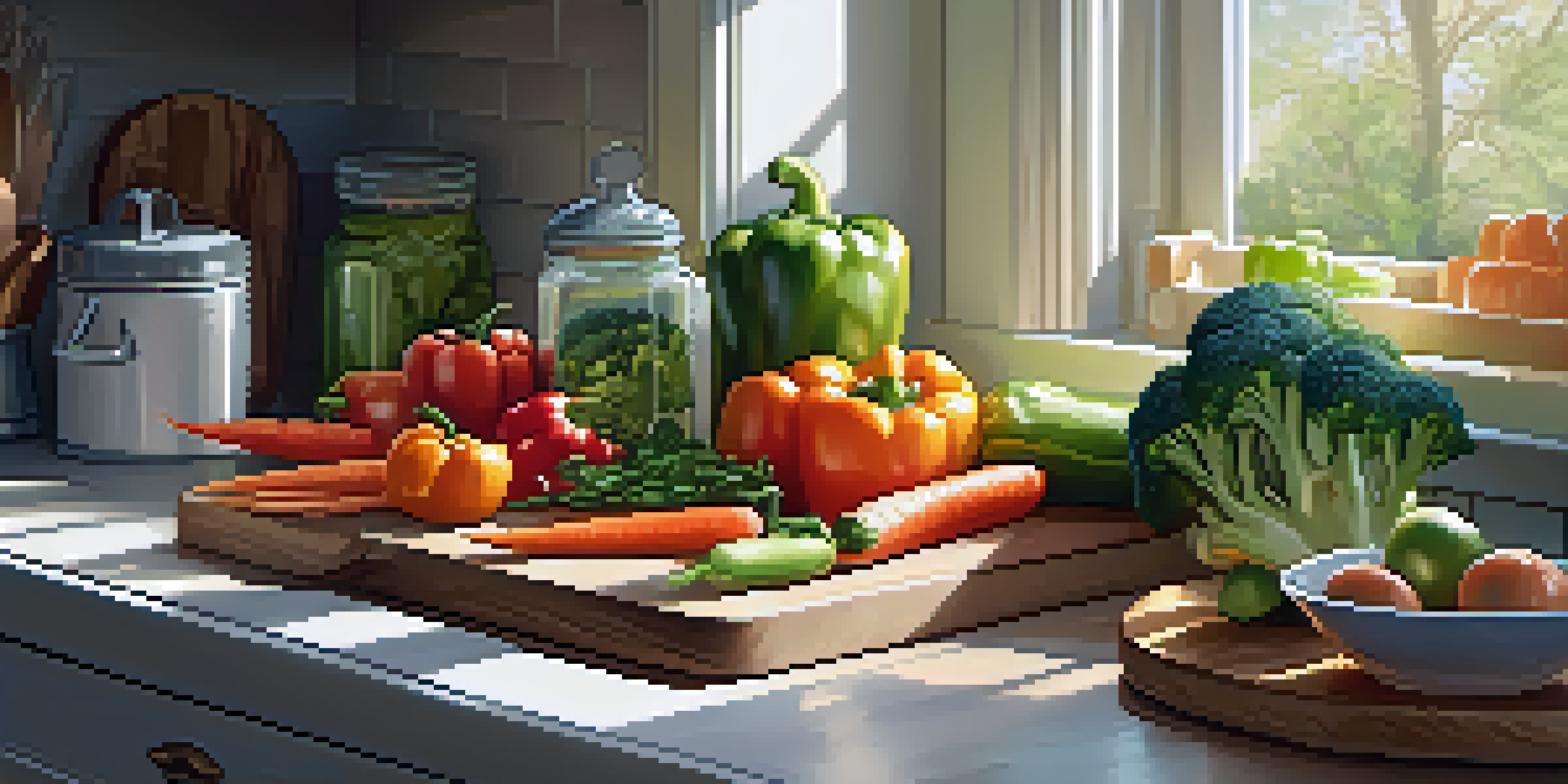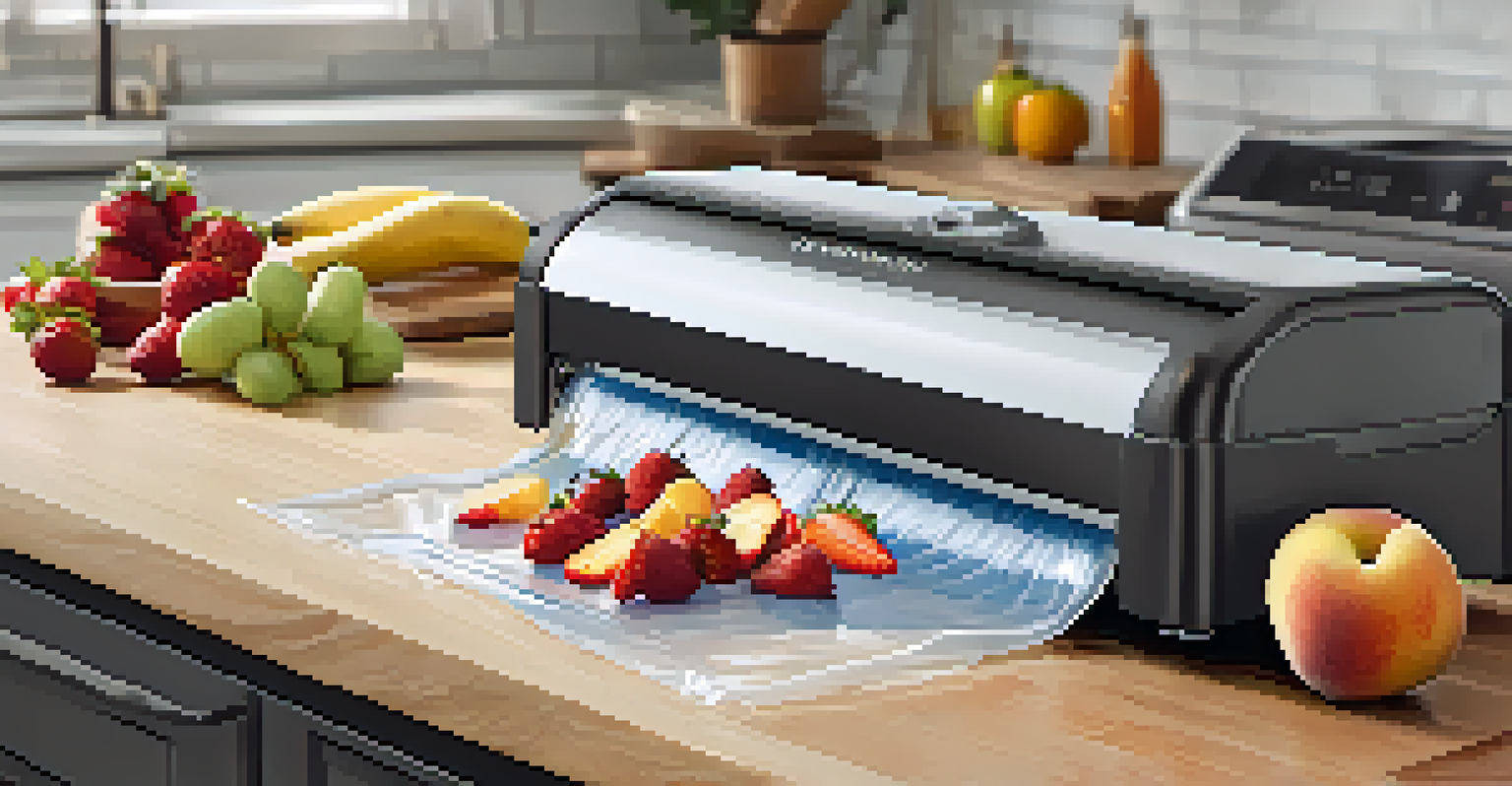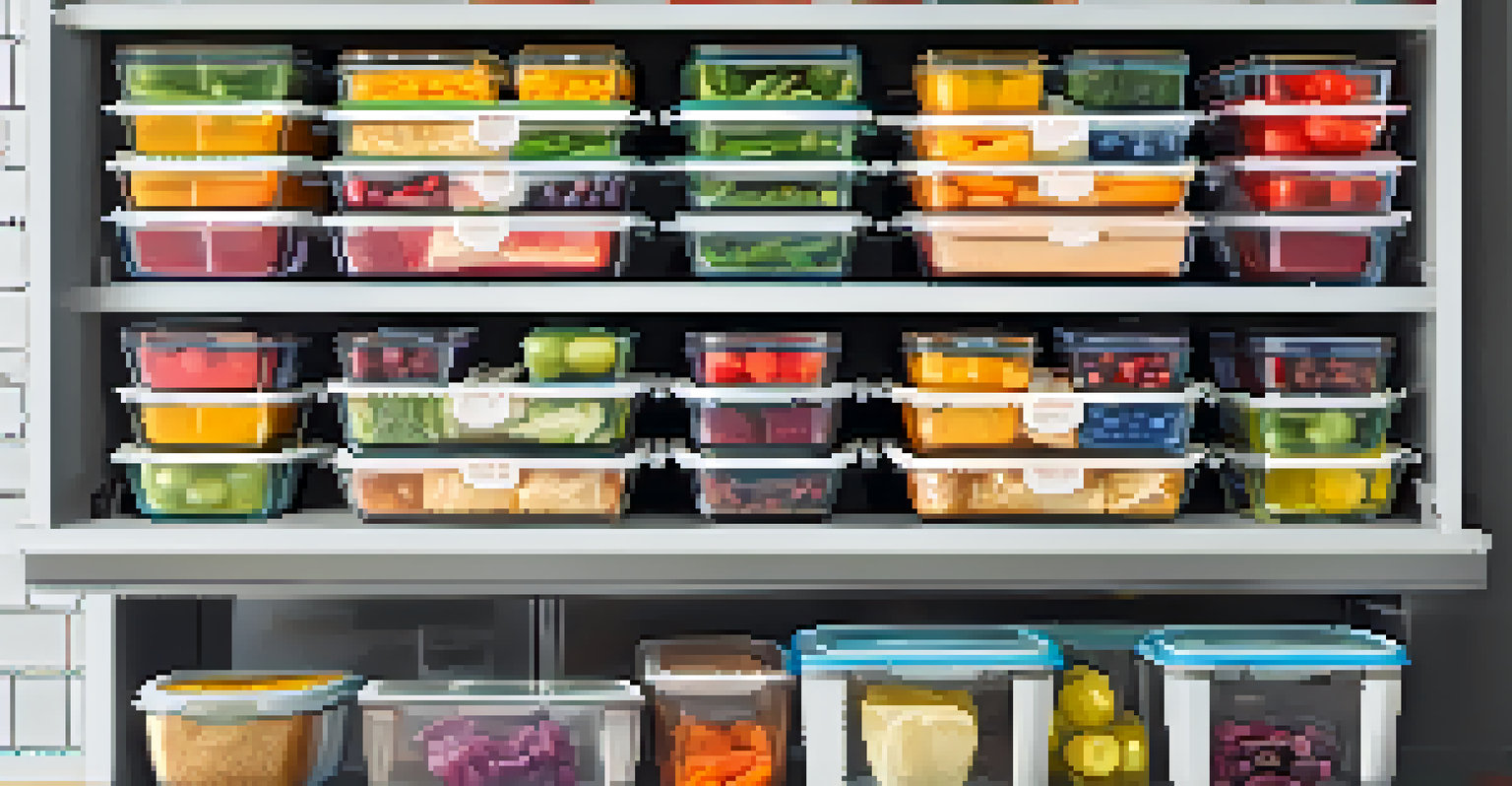Nutritious Meal Prep: Techniques for Healthy Freezing

Understanding the Benefits of Meal Prep and Freezing
Meal prepping is a game-changer for anyone looking to eat healthier. By dedicating a little time each week to prepare meals in advance, you can save money, reduce food waste, and make healthier choices. Freezing those meals allows you to enjoy fresh, nutritious options without the hassle of cooking daily.
Meal prep is a great way to save time and money, while still enjoying delicious, homemade meals.
Imagine coming home after a long day to a delicious, home-cooked meal waiting for you in the freezer. It's not just convenient; it's also a way to control your portion sizes and ingredients, ensuring you know exactly what's in your meals. This simple act can lead to better eating habits and improved health over time.
Furthermore, by batch cooking and freezing, you can take advantage of seasonal produce when it's cheaper and more flavorful. This practice can help diversify your diet, making it easier to include a variety of nutrients in your meals.
Essential Tools for Successful Meal Prep and Freezing
Having the right tools can make your meal prep journey smoother and more efficient. Start with high-quality storage containers, which should be freezer-safe to prevent leaks and freezer burn. Look for options that are stackable, allowing you to maximize space in your freezer while keeping everything organized.

Additionally, investing in a good set of measuring cups and spoons can help you portion your meals accurately. This ensures that you’re not only saving time but also managing your caloric intake effectively. A reliable kitchen scale can also come in handy for precise measurements, especially for recipes that require accuracy.
Meal Prep Saves Time and Money
By preparing meals in advance, you can reduce food waste, save money, and enjoy healthier eating habits.
Lastly, consider using a vacuum sealer if you're serious about freezing meals. This handy gadget removes air from bags, significantly extending the shelf life of your frozen foods while preserving flavor and nutrients. It's a small investment that pays off by keeping your meals fresher, longer.
Choosing the Right Ingredients for Freezing
Not all foods freeze well, so it’s essential to choose your ingredients wisely. Vegetables like bell peppers, carrots, and broccoli freeze beautifully, retaining their nutrients and flavor. However, delicate greens like lettuce or herbs might not fare as well once thawed, as they can become mushy.
The secret of success is to be ready when your opportunity comes.
When it comes to proteins, lean meats, fish, and cooked legumes are excellent choices. They freeze well and can be easily incorporated into various dishes later. On the other hand, dairy products can be tricky; while shredded cheese freezes nicely, whole milk or yogurt may separate upon thawing.
Fruits are another versatile option for freezing. Berries, peaches, and bananas can be frozen either whole or sliced, making them perfect for smoothies or baking. Just remember to wash and dry them thoroughly before freezing to prevent clumping.
Preparing Meals for Freezing: Step-by-Step Guide
The key to successful meal prep is in the preparation. Start by planning your meals for the week ahead, focusing on recipes that freeze well. Once you have your menu, make a shopping list to ensure you have all the necessary ingredients on hand, avoiding last-minute trips to the store.
After your groceries are ready, cook your meals in batches. This not only saves time but also energy, as you’re using your stove and oven efficiently. As you cook, be mindful of portion sizes, as this will make it easier to grab a meal when you're in a rush later on.
Essential Tools for Meal Prep
Using the right kitchen tools, like freezer-safe containers and measuring implements, can streamline your meal prep process.
Once your meals are cooked and cooled, pack them in your freezer-safe containers. Label each container with the date and contents to keep track of what you have. This step is crucial, as it helps prevent the dreaded freezer surprise when you're looking for a meal!
Proper Freezing Techniques for Optimal Freshness
Understanding the right freezing techniques can significantly impact the quality of your meals. First, ensure that your meals are completely cooled before placing them in the freezer. This prevents condensation from forming, which can lead to ice crystals and freezer burn.
When filling your containers, leave some space at the top; liquids expand when they freeze. For items like soups or stews, consider using freezer bags, which can be laid flat for easier storage. Just squeeze out as much air as possible before sealing to further prevent freezer burn.
Lastly, try to freeze your meals in small portions for easier thawing later. This way, you can defrost only what you need without having to compromise the quality of the entire meal. Keeping your meals organized and easy to access will make healthy eating a breeze.
Thawing Techniques: Keeping Meals Safe and Delicious
Proper thawing techniques are just as important as freezing methods. The safest way to thaw meals is in the refrigerator, allowing them to gradually come to temperature. This method keeps your food out of the 'danger zone' where bacteria can grow, ensuring your meals are safe to eat.
If you're short on time, you can also use the microwave to defrost meals, but be cautious to avoid cooking them in the process. Ensure you follow your microwave's instructions for defrosting to maintain food quality. Another quick option is to place your meal in cold water, changing the water every 30 minutes until it's thawed.
Proper Freezing for Freshness
Adhering to proper freezing techniques ensures your meals remain safe, flavorful, and ready to enjoy when you need them.
Once your meal is thawed, consume it within a couple of days for the best quality. If you notice any changes in texture or smell, it's better to err on the side of caution and discard it. Remember, safety first—your health is worth it!
Meal Prep Tips for Sustaining Healthy Eating Habits
Meal prepping isn’t just about saving time; it’s a lifestyle change that can lead to healthier eating habits. Start small—perhaps with just one or two meals each week and gradually increase as you become more comfortable. This approach will help you develop a routine without becoming overwhelmed.
Involve your family or friends in the process! Cooking together can make meal prep more enjoyable and help you stay accountable. You can share recipes and techniques, creating a supportive environment that encourages healthy eating for everyone involved.

Lastly, keep experimenting with new recipes and ingredients. This will not only keep your meals exciting but will also ensure you’re getting a wide range of nutrients. Remember, the goal is to create a sustainable habit that fits your lifestyle, making healthy eating a natural part of your day.